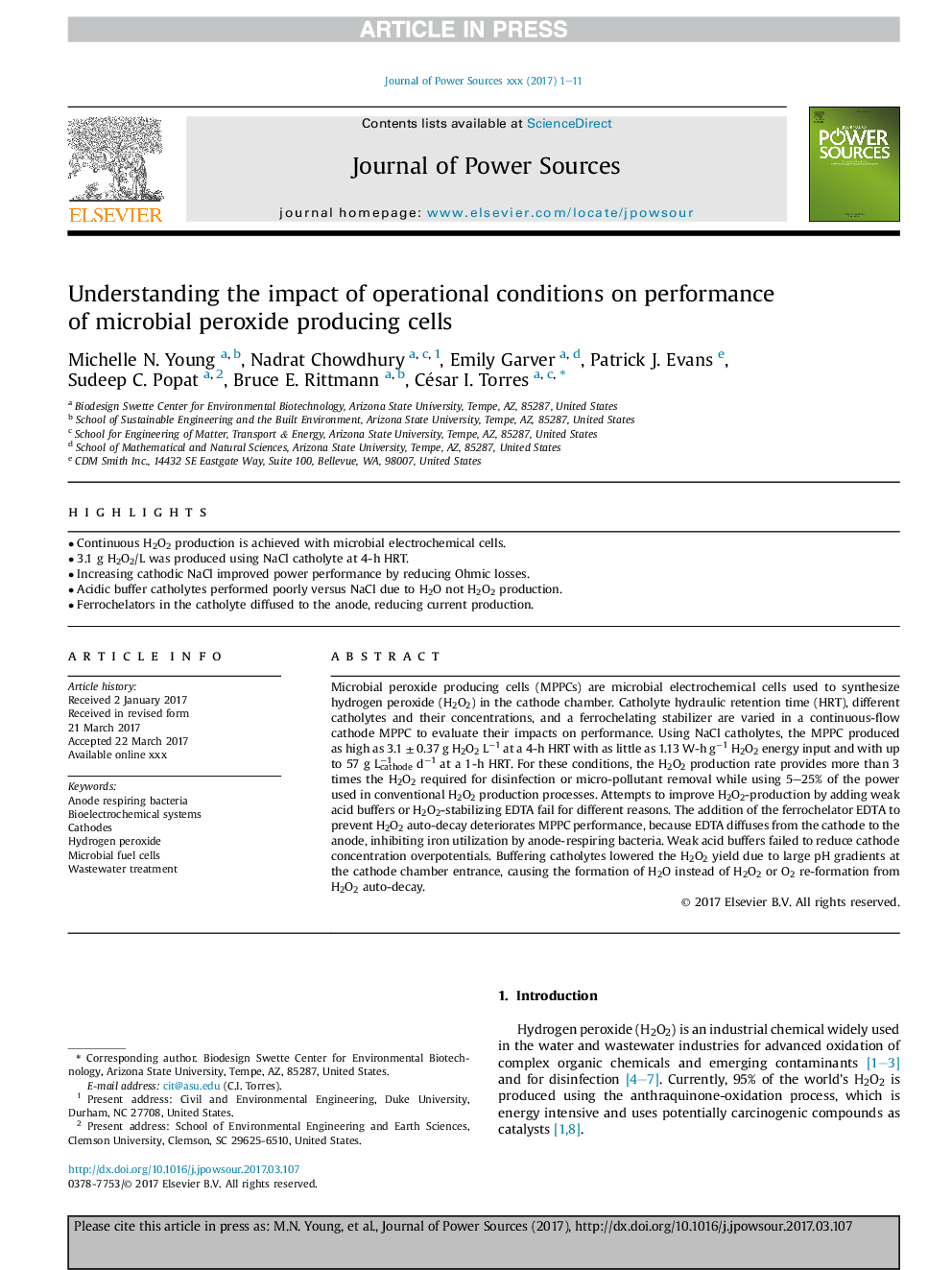| Article ID | Journal | Published Year | Pages | File Type |
|---|---|---|---|---|
| 5149290 | Journal of Power Sources | 2017 | 11 Pages |
Abstract
Microbial peroxide producing cells (MPPCs) are microbial electrochemical cells used to synthesize hydrogen peroxide (H2O2) in the cathode chamber. Catholyte hydraulic retention time (HRT), different catholytes and their concentrations, and a ferrochelating stabilizer are varied in a continuous-flow cathode MPPC to evaluate their impacts on performance. Using NaCl catholytes, the MPPC produced as high as 3.1 ± 0.37 g H2O2 Lâ1 at a 4-h HRT with as little as 1.13 W-h gâ1 H2O2 energy input and with up to 57 g Lcathodeâ1 dâ1 at a 1-h HRT. For these conditions, the H2O2 production rate provides more than 3 times the H2O2 required for disinfection or micro-pollutant removal while using 5-25% of the power used in conventional H2O2 production processes. Attempts to improve H2O2-production by adding weak acid buffers or H2O2-stabilizing EDTA fail for different reasons. The addition of the ferrochelator EDTA to prevent H2O2 auto-decay deteriorates MPPC performance, because EDTA diffuses from the cathode to the anode, inhibiting iron utilization by anode-respiring bacteria. Weak acid buffers failed to reduce cathode concentration overpotentials. Buffering catholytes lowered the H2O2 yield due to large pH gradients at the cathode chamber entrance, causing the formation of H2O instead of H2O2 or O2 re-formation from H2O2 auto-decay.
Keywords
Related Topics
Physical Sciences and Engineering
Chemistry
Electrochemistry
Authors
Michelle N. Young, Nadrat Chowdhury, Emily Garver, Patrick J. Evans, Sudeep C. Popat, Bruce E. Rittmann, César I. Torres,
